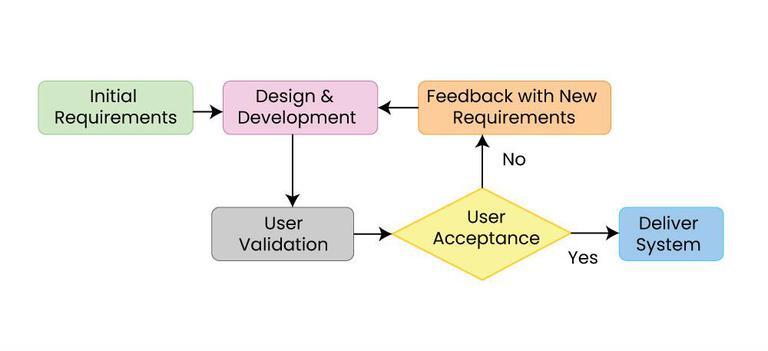|
Test Vector
In computer science and engineering, a test vector is a set of inputs provided to a system in order to test that system. In software development, test vectors are a methodology of software testing and software verification and validation. Rationale In computer science and engineering, a system acts as a computable function. An example of a specific function could be y = f(x) where y is the output of the system and x is the input; however, most systems' inputs are not one-dimensional. When the inputs are multi-dimensional, we could say that the system takes the form y = f(x_1, x_2, ...) ; however, we can generalize this equation to a general form Y = C(X) where Y is the result of the system's execution, C belongs to the set of computable functions, and X is an input vector. While testing the system, various test vectors must be used to examine the system's behavior with differing inputs. Example For example, consider a login page with two input fields: a username field and a pas ... [...More Info...] [...Related Items...] OR: [Wikipedia] [Google] [Baidu] |
|
|
Computer Science
Computer science is the study of computation, information, and automation. Computer science spans Theoretical computer science, theoretical disciplines (such as algorithms, theory of computation, and information theory) to Applied science, applied disciplines (including the design and implementation of Computer architecture, hardware and Software engineering, software). Algorithms and data structures are central to computer science. The theory of computation concerns abstract models of computation and general classes of computational problem, problems that can be solved using them. The fields of cryptography and computer security involve studying the means for secure communication and preventing security vulnerabilities. Computer graphics (computer science), Computer graphics and computational geometry address the generation of images. Programming language theory considers different ways to describe computational processes, and database theory concerns the management of re ... [...More Info...] [...Related Items...] OR: [Wikipedia] [Google] [Baidu] |
|
 |
Computer Engineering
Computer engineering (CE, CoE, or CpE) is a branch of engineering specialized in developing computer hardware and software. It integrates several fields of electrical engineering, electronics engineering and computer science. Computer engineering is referred to as ''electrical and computer engineering'' or '' computer science and engineering'' at some universities. Computer engineers require training in hardware-software integration, software design, and software engineering. It can encompass areas such as electromagnetism, artificial intelligence (AI), robotics, computer networks, computer architecture and operating systems. Computer engineers are involved in many hardware and software aspects of computing, from the design of individual microcontrollers, microprocessors, personal computers, and supercomputers, to circuit design. This field of engineering not only focuses on how computer systems themselves work, but also on how to integrate them into the larger pictur ... [...More Info...] [...Related Items...] OR: [Wikipedia] [Google] [Baidu] |
 |
Software Development
Software development is the process of designing and Implementation, implementing a software solution to Computer user satisfaction, satisfy a User (computing), user. The process is more encompassing than Computer programming, programming, writing source code, code, in that it includes conceiving the goal, evaluating feasibility, analyzing software requirements, requirements, software design, design, software testing, testing and software release life cycle, release. The process is part of software engineering which also includes management, organizational management, Software project management, project management, configuration management and other aspects. Software development involves many skills and job specializations including software programmer, programming, software test, testing, Technical writing, documentation, graphic design, user support, marketing, and fundraising. Software development involves many software tools, tools including: compiler, integrated develo ... [...More Info...] [...Related Items...] OR: [Wikipedia] [Google] [Baidu] |
 |
Software Testing
Software testing is the act of checking whether software satisfies expectations. Software testing can provide objective, independent information about the Quality (business), quality of software and the risk of its failure to a User (computing), user or sponsor. Software testing can determine the Correctness (computer science), correctness of software for specific Scenario (computing), scenarios but cannot determine correctness for all scenarios. It cannot find all software bug, bugs. Based on the criteria for measuring correctness from an test oracle, oracle, software testing employs principles and mechanisms that might recognize a problem. Examples of oracles include specifications, Design by Contract, contracts, comparable products, past versions of the same product, inferences about intended or expected purpose, user or customer expectations, relevant standards, and applicable laws. Software testing is often dynamic in nature; running the software to verify actual output ... [...More Info...] [...Related Items...] OR: [Wikipedia] [Google] [Baidu] |
|
Software Verification And Validation
In software project management, software testing, and software engineering, verification and validation is the process of checking that a software engineer system meets specifications and requirements so that it fulfills its intended purpose. It may also be referred to as software quality control. It is normally the responsibility of software testers as part of the software development lifecycle. In simple terms, software verification is: "Assuming we should build X, does our software achieve its goals without any bugs or gaps?" On the other hand, software validation is: "Was X what we should have built? Does X meet the high-level requirements?" Definitions Verification and validation are not the same thing, although they are often confused. Boehm succinctly expressed the difference as * Verification: Are we building the product right? * Validation: Are we building the right product? "Building the product right" checks that the ''specifications'' are correctly implemented by th ... [...More Info...] [...Related Items...] OR: [Wikipedia] [Google] [Baidu] |
|
|
Computable Function
Computable functions are the basic objects of study in computability theory. Informally, a function is ''computable'' if there is an algorithm that computes the value of the function for every value of its argument. Because of the lack of a precise definition of the concept of algorithm, every formal definition of computability must refer to a specific model of computation. Many such models of computation have been proposed, the major ones being Turing machines, register machines, lambda calculus and general recursive functions. Although these four are of a very different nature, they provide exactly the same class of computable functions, and, for every model of computation that has ever been proposed, the computable functions for such a model are computable for the above four models of computation. The Church–Turing thesis is the unprovable assertion that every notion of computability that can be imagined can compute only functions that are computable in the above sense. ... [...More Info...] [...Related Items...] OR: [Wikipedia] [Google] [Baidu] |
|
|
Username
A user is a person who uses a computer or Computer network, network Service (systems architecture), service. A user often has a user account and is identified to the system by a username (or user name). Some software products provide services to other systems and have no direct end users. End user End users are the ultimate human users (also referred to as Operator (profession), operators) of a software product. The end user stands in contrast to users who support or maintain the product such as sysops, database administrators and computer technicians. The term is used to abstract and distinguish those who only use the software from the developers of the system, who enhance the software for end users. In user-centered design, it also distinguishes the software operator from the client who pays for its development and other Stakeholder (corporate), stakeholders who may not directly use the software, but help establish its Software requirements, requirements. This abstracti ... [...More Info...] [...Related Items...] OR: [Wikipedia] [Google] [Baidu] |
|
 |
Password
A password, sometimes called a passcode, is secret data, typically a string of characters, usually used to confirm a user's identity. Traditionally, passwords were expected to be memorized, but the large number of password-protected services that a typical individual accesses can make memorization of unique passwords for each service impractical. Using the terminology of the NIST Digital Identity Guidelines, the secret is held by a party called the ''claimant'' while the party verifying the identity of the claimant is called the ''verifier''. When the claimant successfully demonstrates knowledge of the password to the verifier through an established authentication protocol, the verifier is able to infer the claimant's identity. In general, a password is an arbitrary String (computer science), string of character (computing), characters including letters, digits, or other symbols. If the permissible characters are constrained to be numeric, the corresponding secret is sometimes ... [...More Info...] [...Related Items...] OR: [Wikipedia] [Google] [Baidu] |
|
Vector (mathematics And Physics)
In mathematics and physics, vector is a term that refers to physical quantity, quantities that cannot be expressed by a single number (a scalar (physics), scalar), or to elements of some vector spaces. Historically, vectors were introduced in geometry and physics (typically in mechanics) for quantities that have both a magnitude and a direction, such as displacement (geometry), displacements, forces and velocity. Such quantities are represented by geometric vectors in the same way as distances, masses and time are represented by real numbers. The term ''vector'' is also used, in some contexts, for tuples, which are finite sequences (of numbers or other objects) of a fixed length. Both geometric vectors and tuples can be added and scaled, and these vector operations led to the concept of a vector space, which is a set (mathematics), set equipped with a vector addition and a scalar multiplication that satisfy some axioms generalizing the main properties of operations on the abov ... [...More Info...] [...Related Items...] OR: [Wikipedia] [Google] [Baidu] |
|
|
Scalar (mathematics)
A scalar is an element of a field which is used to define a ''vector space''. In linear algebra, real numbers or generally elements of a field are called scalars and relate to vectors in an associated vector space through the operation of scalar multiplication (defined in the vector space), in which a vector can be multiplied by a scalar in the defined way to produce another vector. Generally speaking, a vector space may be defined by using any field instead of real numbers (such as complex numbers). Then scalars of that vector space will be elements of the associated field (such as complex numbers). A scalar product operation – not to be confused with scalar multiplication – may be defined on a vector space, allowing two vectors to be multiplied in the defined way to produce a scalar. A vector space equipped with a scalar product is called an inner product space. A quantity described by multiple scalars, such as having both direction and magnitude, is called a ... [...More Info...] [...Related Items...] OR: [Wikipedia] [Google] [Baidu] |
|
|
Automatic Test Pattern Generation
ATPG (acronym for both automatic test pattern generation and automatic test pattern generator) is an electronic design automation method or technology used to find an input (or test) sequence that, when applied to a digital circuit, enables automatic test equipment to distinguish between the correct circuit behavior and the faulty circuit behavior caused by defects. The generated patterns are used to test semiconductor devices after manufacture, or to assist with determining the cause of failure (failure analysis). The effectiveness of ATPG is measured by the number of modeled defects, or fault models, detectable and by the number of generated patterns. These metrics generally indicate test quality (higher with more fault detections) and test application time (higher with more patterns). ATPG efficiency is another important consideration that is influenced by the fault model under consideration, the type of circuit under test ( full scan, synchronous sequential, or asynchronous se ... [...More Info...] [...Related Items...] OR: [Wikipedia] [Google] [Baidu] |
|
 |
Computer Engineering
Computer engineering (CE, CoE, or CpE) is a branch of engineering specialized in developing computer hardware and software. It integrates several fields of electrical engineering, electronics engineering and computer science. Computer engineering is referred to as ''electrical and computer engineering'' or '' computer science and engineering'' at some universities. Computer engineers require training in hardware-software integration, software design, and software engineering. It can encompass areas such as electromagnetism, artificial intelligence (AI), robotics, computer networks, computer architecture and operating systems. Computer engineers are involved in many hardware and software aspects of computing, from the design of individual microcontrollers, microprocessors, personal computers, and supercomputers, to circuit design. This field of engineering not only focuses on how computer systems themselves work, but also on how to integrate them into the larger pictur ... [...More Info...] [...Related Items...] OR: [Wikipedia] [Google] [Baidu] |